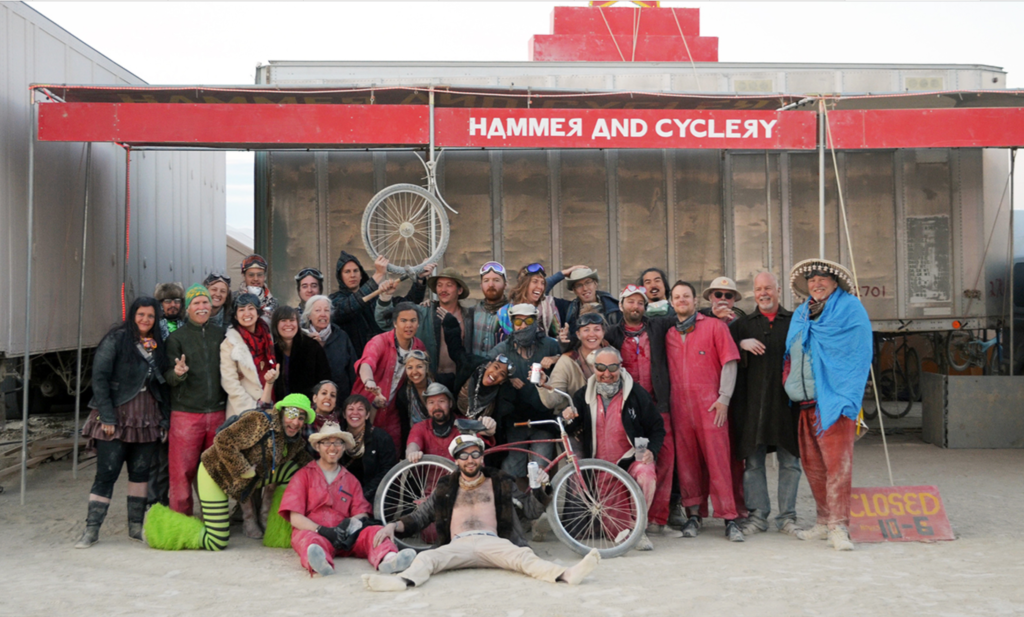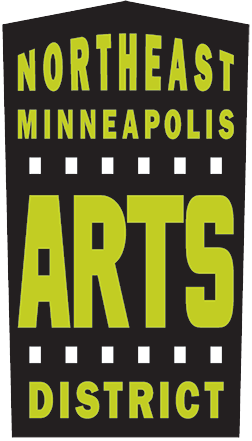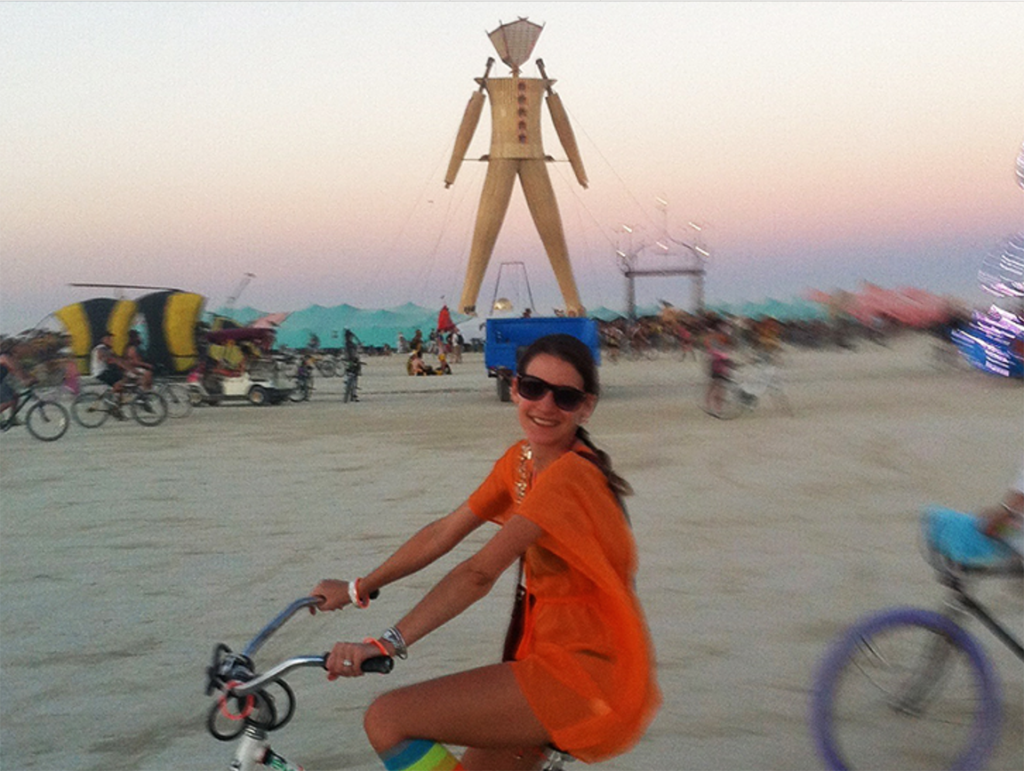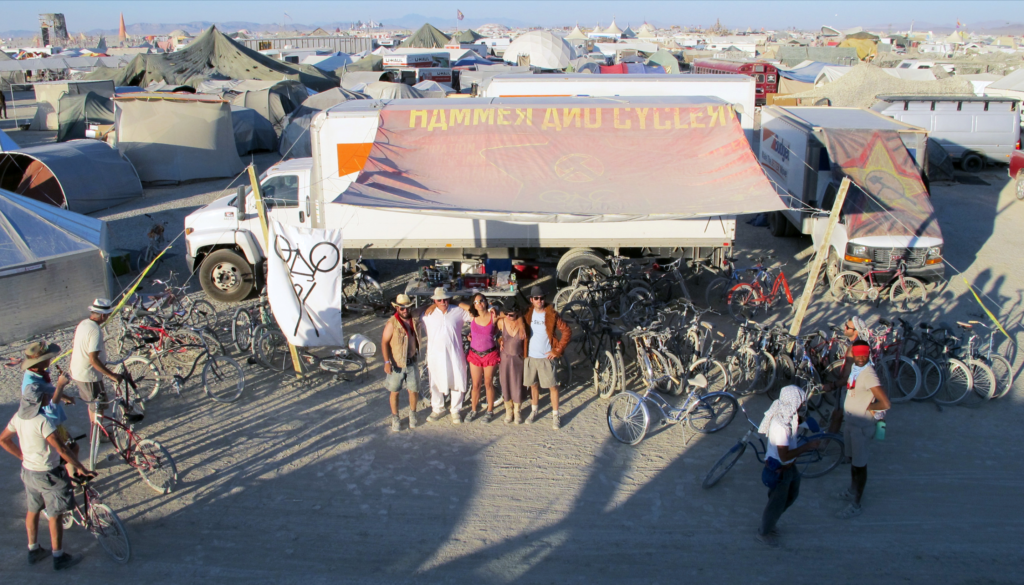The Burning Man event has been around for 35 years. It is full of mystery and excitement, taking place in the Nevada Desert once a year for seven days at the end of August (the 27th through September 4 this year). Tens of thousands of people build a temporary city, and they hope, a society of connections that last beyond the event. They make and share art, then leave the desert as it was found, or better.

I have always been interested in attending. Talking with Elizabeth Richardson and Seth Stattmiller from Recovery Bike Shop, who have attended since 2009, put me on a path to better understand the event. The conversation offers insight on how our arts district community and artists who have attended can learn from it and potentially bring home ideas and new energy to incorporate into our artistic fold.
The goal of Burning Man, as Seth and Elizabeth see it, is to create an intimate interaction with people that doesn’t happen anywhere else. This is a no-guilt zone. Burning Man is devoted to the act of giving. The value of a gift is unconditional. Gifting does not contemplate a return or exchange for something of equal value.
Everything has to be brought in. Elizabeth said, “It is an experimental society.” A gift economy is the key to Burning Man. There are exceptions, like fuel, water and food. Everyone has to have a plan for their own survival mode. “You plan for months. Everyone brings costumes. Your first year is your best year. It delivers. So foreign, so amazing being a little kid again,” she said.
The couple are all in. In 2019 they brought 2,000 bikes, 16 semitrucks worth, to Burning Man to rent out for the seven-day event. They set up one of the “camps,” usually bringing around 70 helpers renting bikes to some of the 70,000 participants, which is their gift to the effort.
Everything is so different and so new, even the driving process. “When you get there, you hit the line, where you see taillights as far as you can see,” said Seth. Their first year Seth and Elizabeth were there until sunrise, 12 hours of waiting. “The dust is pervasive. People are so strange. They are primed to interact, not like Minnesotans. They are wearing crazy costumes or nothing at all. You feel like you are on an alien planet surrounded by aliens and you have to find a way to survive.” Digging deep, one finds resources you did not know you had emotionally and physically.
Burning Man has become a gallery. People submit proposals for public art. Sometimes there are honorariums. The more Burning Man’s organizers like your idea the closer you are to the center of the show. The idea is everyone is expected to participate, no spectators. More than 1000 camps submit ideas, and they are expected to be open at least eight hours a day, offering their gifts (for the most part, experiences). While it is known for the big burning at the end of the event, most things don’t get burned, though everything is removed. Lot of deals are made for the big art pieces. Tickets are $500- $600. They sell out in March almost instantly.
Seth and Elizabeth are big thinkers. Burning Man has been a place of inspiration for them. Burning Man has been a fundraiser for Recovery Bike Shop to create a healthier community, and promote a much healthier lifestyle than that based on cars. The more people they can get on bicycles the more car miles they can replace to reach their goals and values. They have been contemplating ideas to bring a bike program to art events in the Northeast Minneapolis Arts District.
More info on Burning Man here.
by Josh Blanc


